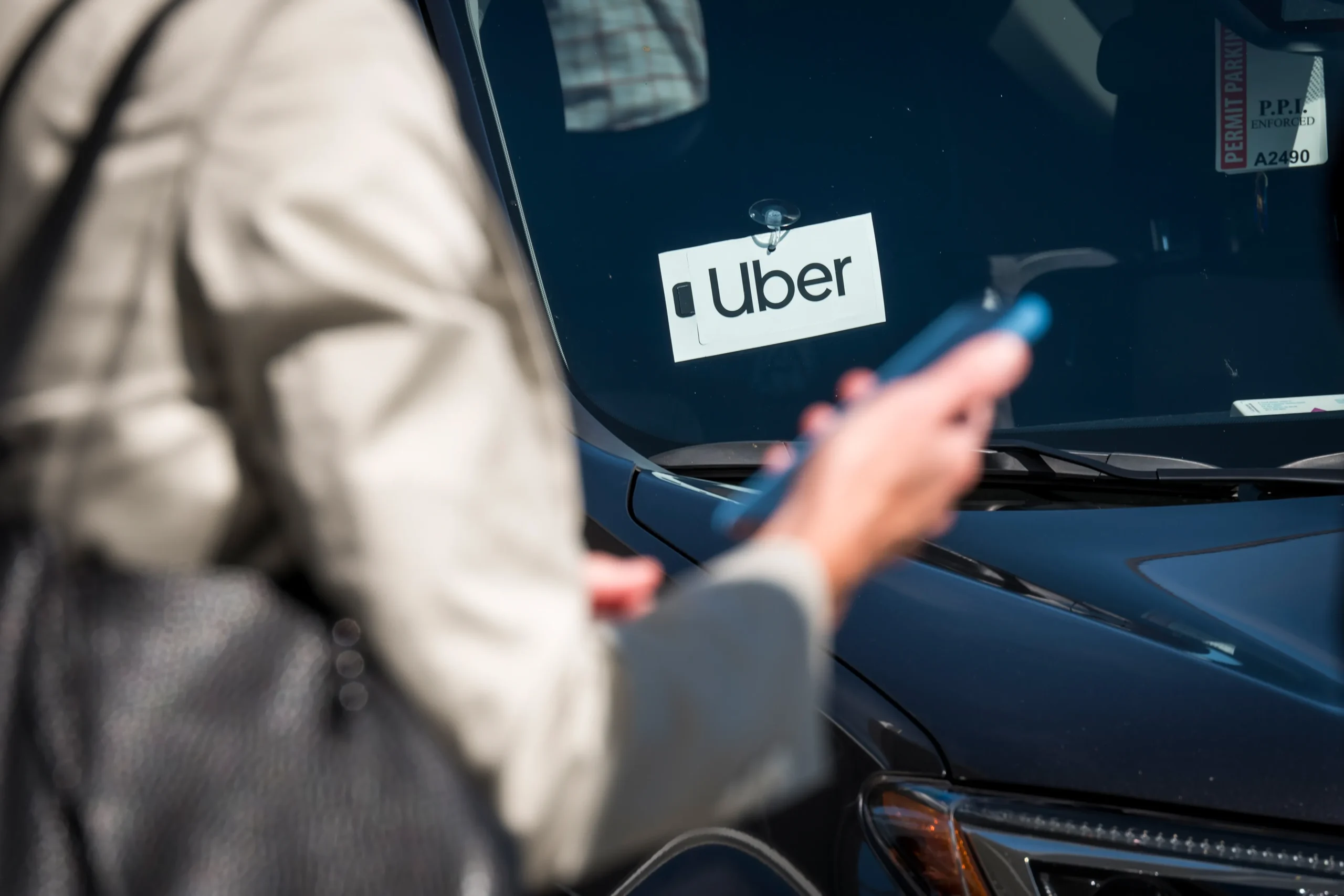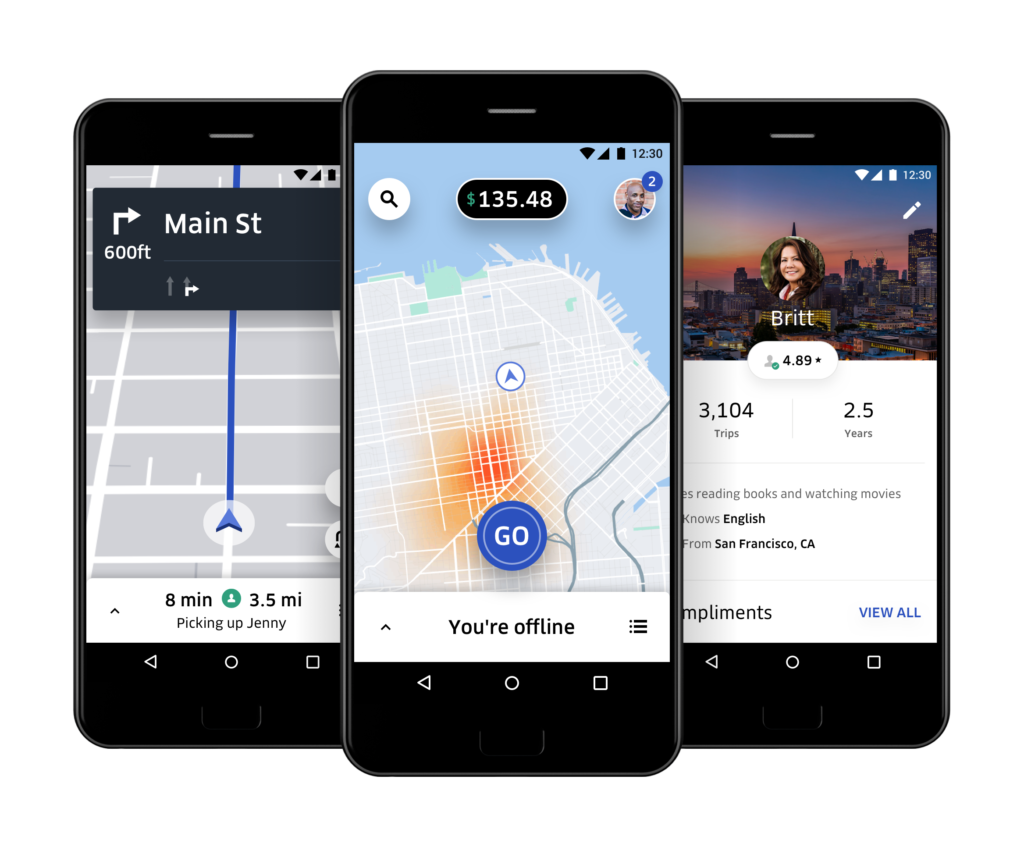Rideshare Drivers Tax Strategies
Start Saving ($ 5,261) Today Switch to CRO Accounting
Uber Driver Bad Tax Strategy Risks
The sad reality is that Rideshare Uber and Lyft drivers generally file tax returns as individual drivers instead of exploring the tax system.
Uber drivers typically decide to risk IRS Audits by declaring more expenses, living with the frustration of a low income, limiting themselves to be able to finance their dream house or basic even meet basic financial needs.
Uber Driver # 1 Comprehensive Guide
Introduction
- Define the health topic.
- Explain its relevance and importance.
Types and Categories
- Different classifications or types of the health condition or topic.
Symptoms and Signs
- Common and uncommon symptoms associated with the topic.
Causes and Risk Factors
- Biological, environmental, and lifestyle factors.
Diagnosis and Tests
- Common diagnostic tools and tests used.
Treatment Options
- Medical treatments, therapies, and lifestyle adjustments.
Preventive Measures
- Tips and strategies to prevent the condition.
Personal Stories or Case Studies
- Real-life implications through individual stories.
Expert Insights
- Quotes or advice from medical professionals.
Conclusion
- Summary of key points and a call to action for further education.
Outline for “Uber Driver”
Introduction
- What is an Uber Driver?
- History and Evolution of Uber
- Importance of Uber in Modern Transportation
Becoming an Uber Driver
- Requirements and Qualifications
- Application Process
- Background Check and Approval
Types of Uber Services
- UberX
- UberXL
- UberSelect
- UberBlack
- UberPool
Vehicle Requirements
- Standard Vehicle Requirements
- Special Requirements for Different Uber Services
- Maintaining Vehicle Standards
Driver Responsibilities
- Ensuring Passenger Safety
- Following Local Traffic Laws
- Providing Excellent Customer Service
Driver Earnings
- How Uber Drivers are Paid
- Factors Influencing Earnings
- Tips and Bonuses
Managing Expenses
- Fuel and Maintenance Costs
- Insurance Requirements
- Tax Deductions and Filing
Driving Strategies
- Peak Hours and Hotspots
- Utilizing the Uber Driver App
- Maximizing Efficiency
Safety Tips for Drivers
- Personal Safety Measures
- Dealing with Difficult Passengers
- Emergency Procedures
Customer Interaction
- Effective Communication Skills
- Handling Complaints and Feedback
- Building a Positive Driver Rating
Legal Considerations
- Understanding Rideshare Regulations
- Compliance with Local Laws
- Uber’s Terms of Service
Insurance and Protection
- Uber’s Insurance Policy
- Additional Coverage Options
- Steps to Take After an Accident
Technology and Tools
- The Uber Driver App Features
- GPS and Navigation Tools
- In-car Technology
Health and Wellness
- Managing Long Hours on the Road
- Tips for Staying Alert and Focused
- Healthy Eating and Exercise
Challenges of Being an Uber Driver
- Common Issues Faced by Drivers
- Coping with Stress and Fatigue
- Dealing with Competition
Success Stories
- Interviews with Top-Rated Uber Drivers
- Inspirational Driver Stories
- Lessons Learned from Experienced Drivers
Future of Uber Driving
- Innovations in Ridesharing
- Impact of Autonomous Vehicles
- Predictions for the Rideshare Industry
FAQ Section
- Frequently Asked Questions
- Common Misconceptions
- Tips for New Drivers
Introduction
What is an Uber Driver?
An Uber driver is an individual who uses their personal vehicle to provide rideshare services through the Uber platform. By leveraging the Uber app, drivers can connect with passengers looking for convenient and affordable transportation. Uber has revolutionized the transportation industry by offering a flexible income opportunity for drivers while providing a reliable and efficient service for passengers.
History and Evolution of Uber
Uber was founded in 2009 by Garrett Camp and Travis Kalanick. It started as a luxury ride service in San Francisco, offering high-end vehicles at a premium price. Over the years, Uber expanded its services to include more affordable options, such as UberX and UberPool. Today, Uber operates in hundreds of cities worldwide, transforming urban transportation and challenging traditional taxi services.
Importance of Uber in Modern Transportation
Uber has become a crucial part of modern transportation, providing millions of rides daily. It offers a convenient alternative to owning a car or using public transportation, especially in urban areas. For many drivers, Uber provides a flexible job opportunity, allowing them to work on their own schedules. The platform has also pushed innovation in the industry, leading to the development of autonomous vehicles and advanced ride-hailing technologies.
Becoming an Uber Driver
Requirements and Qualifications
To become an Uber driver, applicants must meet specific requirements, including being at least 21 years old, holding a valid driver’s license, and having at least one year of driving experience. Additionally, drivers must have access to a qualifying vehicle and provide proof of insurance.
Application Process
The application process for becoming an Uber driver involves several steps. First, potential drivers must sign up on the Uber website or app. They will need to provide personal information, including their name, address, and Social Security number, for a background check.
Background Check and Approval
Uber conducts a thorough background check on all applicants, including a review of their driving record and criminal history. This process ensures that only safe and reliable drivers are approved to join the platform. Once the background check is complete and the applicant is approved, they can begin driving for Uber.
Types of Uber Services
UberX
UberX is the most popular and affordable Uber service, offering rides in standard vehicles that can accommodate up to four passengers.
UberXL
UberXL provides rides in larger vehicles, such as SUVs and minivans, that can accommodate up to six passengers.
UberSelect
UberSelect offers a more luxurious ride experience with high-end vehicles and professional drivers.
UberBlack
UberBlack is Uber’s premium service, featuring luxury vehicles and highly rated drivers for a top-tier experience.
UberPool
UberPool allows passengers to share rides with others going in the same direction, reducing costs and environmental impact.
Vehicle Requirements
Standard Vehicle Requirements
All vehicles used for Uber services must meet certain criteria, including being a four-door car, truck, or minivan, and passing a vehicle inspection.
Special Requirements for Different Uber Services
Different Uber services have specific vehicle requirements. For example, UberBlack vehicles must be luxury models, while UberXL vehicles need to accommodate more passengers.
Maintaining Vehicle Standards
Drivers are responsible for maintaining their vehicles to ensure they meet Uber’s standards, including regular cleaning and maintenance.
Driver Responsibilities
Ensuring Passenger Safety
Uber drivers must prioritize passenger safety by following traffic laws, using seat belts, and avoiding distractions while driving.
Following Local Traffic Laws
Adhering to local traffic laws and regulations is crucial for Uber drivers to ensure a safe and legal ride experience.
Providing Excellent Customer Service
Drivers should aim to provide a pleasant and professional experience for passengers, including being punctual, courteous, and helpful.
Driver Earnings
How Uber Drivers are Paid
Uber drivers are paid based on the distance and duration of each ride, with additional earnings from tips and bonuses.
Factors Influencing Earnings
Earnings can vary depending on factors such as location, time of day, and demand for rides. Peak hours and busy areas often lead to higher earnings.
Tips and Bonuses
Drivers can earn extra income through tips from passengers and bonuses offered by Uber for meeting specific performance criteria.
Managing Expenses
Fuel and Maintenance Costs
Drivers are responsible for fuel and maintenance costs, which can significantly impact their overall earnings.
Insurance Requirements
Uber requires drivers to have personal auto insurance that meets local regulations. Additionally, Uber provides supplemental insurance coverage during rides.
Tax Deductions and Filing
Uber drivers can take advantage of various tax deductions, such as mileage, vehicle expenses, and other business-related costs. It’s essential to keep accurate records and file taxes appropriately.
Driving Strategies
Peak Hours and Hotspots
Understanding peak hours and hotspots can help drivers maximize their earnings by focusing on areas with high demand for rides.
Utilizing the Uber Driver App
The Uber Driver app provides valuable tools and information to help drivers navigate, find rides, and manage their earnings efficiently.
Maximizing Efficiency
Drivers can maximize their efficiency by planning routes, minimizing downtime, and using navigation tools to avoid traffic.
Safety Tips for Drivers
Personal Safety Measures
Drivers should take personal safety measures, such as keeping doors locked when not in use, being cautious about accepting rides in unfamiliar areas, and having a plan for emergencies.
Dealing with Difficult Passengers
Handling difficult passengers calmly and professionally is crucial. If a situation escalates, drivers can contact Uber support or local authorities for assistance.
Emergency Procedures
In case of an emergency, drivers should know the appropriate procedures, including contacting emergency services and Uber support.
Customer Interaction
Effective Communication Skills
Clear and friendly communication with passengers can enhance the ride experience and lead to better ratings and tips.
Handling Complaints and Feedback
Drivers should address complaints and feedback constructively, using them as opportunities to improve their service.
Building a Positive Driver Rating
Maintaining a high driver rating is essential for continued success on the Uber platform. Providing excellent service, being punctual, and maintaining a clean vehicle are key factors.
Legal Considerations
Understanding Rideshare Regulations
Drivers must be aware of and comply with local rideshare regulations, which can vary by city and state.
Compliance with Local Laws
Adhering to local traffic and business laws is crucial for operating legally and avoiding fines or penalties.
Uber’s Terms of Service
Drivers should familiarize themselves with Uber’s terms of service, which outline the rules and expectations for using the platform.
Insurance and Protection
Uber’s Insurance Policy
Uber provides insurance coverage for drivers while they are on a trip, including liability and collision coverage.
Additional Coverage Options
Drivers may choose to purchase additional insurance coverage for extra protection.
Steps to Take After an Accident
In the event of an accident, drivers should follow specific steps, including contacting emergency services, documenting the incident, and notifying Uber.
Technology and Tools
The Uber Driver App Features
The Uber Driver app offers features such as trip tracking, earnings reports, and support resources.
GPS and Navigation Tools
Using GPS and navigation tools can help drivers find efficient routes and avoid traffic, ensuring timely arrivals.
In-car Technology
In-car technology, such as phone mounts and charging equipment, can enhance the driving experience and keep drivers connected.
Health and Wellness
Managing Long Hours on the Road
Driving for long hours can be taxing, so it’s important for drivers to take breaks, stretch, and stay hydrated.
Tips for Staying Alert and Focused
To stay alert, drivers should get adequate rest, avoid distractions, and consider strategies like listening to music or podcasts.
Healthy Eating and Exercise
Maintaining a healthy diet and incorporating exercise into daily routines can help drivers stay energized and focused.
Challenges of Being an Uber Driver
Common Issues Faced by Drivers
Drivers often face challenges such as long hours, difficult passengers, and fluctuating earnings.
Coping with Stress and Fatigue
Effective stress management techniques, such as mindfulness and regular breaks, can help drivers cope with the demands of the job.
Dealing with Competition
Competition from other rideshare drivers and traditional taxis can impact earnings, so drivers must find ways to stand out and attract more passengers.
Success Stories
Interviews with Top-Rated Uber Drivers
Interviews with top-rated Uber drivers can provide valuable insights and tips for success.
Inspirational Driver Stories
Sharing inspirational stories of drivers who have overcome challenges can motivate and encourage others.
Lessons Learned from Experienced Drivers
Experienced drivers can offer practical advice and lessons learned from their time on the road.
Future of Uber Driving
Innovations in Ridesharing
Technological advancements, such as autonomous vehicles and AI, are shaping the future of ridesharing.
Impact of Autonomous Vehicles
The development of autonomous vehicles may significantly impact the rideshare industry, potentially reducing the need for human drivers.
Predictions for the Rideshare Industry
Experts predict continued growth and evolution in the rideshare industry, with new services and technologies emerging.
FAQ Section
Frequently Asked Questions
- How do I sign up to be an Uber driver?
- What are the vehicle requirements for Uber?
- How much can I earn as an Uber driver?
Common Misconceptions
- Uber drivers don’t need insurance.
- Driving for Uber is a guaranteed source of income.
Tips for New Drivers
- Start with short trips to get familiar with the app.
- Keep your vehicle clean and well-maintained.
Conclusion
Recap and Key Takeaways
Becoming an Uber driver offers flexibility and earning potential, but it comes with responsibilities and challenges. Understanding the requirements, maximizing earnings, and maintaining safety are crucial for success.
Call to Action
For those interested in becoming an Uber driver, start by visiting the Uber website to learn more and begin the application process. Stay informed about industry trends and continuously improve your service to thrive in the rideshare industry.

Becoming a Successful Uber Driver: A Comprehensive Guide
In today’s gig economy, becoming an Uber driver presents a lucrative opportunity for those seeking flexible work hours and the potential for significant earnings. Whether you are looking to drive full-time or as a side hustle, understanding the nuances of this profession can significantly impact your success. This comprehensive guide aims to provide detailed insights into the life of an Uber driver, from the initial requirements to advanced strategies for maximizing earnings.
Understanding the Requirements
To become an Uber driver, there are several essential requirements you must meet. These requirements ensure that all drivers provide a safe and reliable service to passengers.
Basic Eligibility Criteria
- Age Requirements: Depending on your location, you must be at least 21 years old to drive with Uber.
- Driving Experience: You should have at least one year of licensed driving experience in the US (or three years if you are under 25 years old).
- Valid Driver’s License: A current and valid US driver’s license is mandatory.
- Background Check: Uber conducts a thorough background check, which includes reviewing your driving history and a criminal background check.
Vehicle Requirements
- Vehicle Age: Your car must meet the age requirement specific to your city. Typically, the vehicle should be a model year 15 years old or newer.
- Four-Door Vehicle: Your car must have four doors and be able to transport a minimum of four passengers, excluding the driver.
- Insurance: You must have in-state personal auto insurance. Uber also provides additional insurance while you are online with the app.
- Vehicle Inspection: Your vehicle must pass an inspection to ensure it meets Uber’s safety standards.
Getting Started
Sign-Up Process
- Create an Account: Sign up on the Uber website or app. Provide necessary information such as your name, email, phone number, and vehicle information.
- Document Submission: Upload required documents including your driver’s license, proof of insurance, and vehicle registration.
- Background Check: Uber will conduct a background check. This process can take a few days to a week.
- Vehicle Inspection: Schedule a vehicle inspection at an Uber Greenlight Hub or an authorized third-party location.
Downloading the Uber Driver App
Once you are approved, download the Uber Driver app. This app will be your primary tool for accepting ride requests, navigating to pick-up and drop-off locations, and managing your earnings.
Maximizing Your Earnings
Understanding Surge Pricing
Surge pricing occurs when demand for rides exceeds the number of available drivers. During these times, fares increase, allowing you to earn more money. Learn the patterns of surge pricing in your area to maximize your earnings.
Optimal Driving Hours
Identify the peak hours in your city. Typically, mornings (7-9 AM), evenings (5-7 PM), and weekends see the highest demand for rides. Additionally, special events and holidays can also lead to increased demand.
Acceptance Rate and Cancellation Rate
Maintain a high acceptance rate and a low cancellation rate to stay in good standing with Uber. Consistently accepting ride requests and minimizing cancellations can lead to better ratings and potentially higher earnings.
Customer Service and Ratings
Providing excellent customer service is crucial. Maintain a clean vehicle, be courteous, and offer amenities like phone chargers or bottled water. High ratings can result in more ride requests and eligibility for bonuses.
Navigating Challenges
Dealing with Difficult Passengers
Handling difficult passengers professionally can impact your ratings positively. Stay calm, listen to their concerns, and avoid confrontations. Reporting serious issues to Uber support can also provide protection.
Vehicle Maintenance
Regular vehicle maintenance is essential for safety and efficiency. Keep up with oil changes, tire rotations, and other routine services. A well-maintained vehicle ensures a smoother ride and reduces the likelihood of breakdowns.
Balancing Work and Personal Life
Driving for Uber offers flexibility, but it’s important to balance your work hours with personal time. Set a schedule that works for you and ensures you have time to rest and recharge.
Advanced Strategies for Success
Leverage Uber Pro
Uber Pro is a rewards program for drivers. By maintaining high ratings and low cancellation rates, you can unlock various rewards such as higher earnings, free tuition for online courses, and discounted car maintenance.
Utilize Destination Filters
The Destination Filter feature allows you to receive ride requests in the direction of your destination. This is particularly useful if you want to end your driving session near your home or another specific location.
Stay Informed
Keep up-to-date with Uber’s policies and features. Regularly check the Uber blog, driver forums, and official communications to stay informed about changes that could impact your driving experience.
Conclusion
Becoming a successful Uber driver requires more than just getting behind the wheel. By understanding the requirements, maximizing your earnings through strategic driving, and navigating challenges effectively, you can make the most of your time on the road. Implement these detailed strategies and tips to enhance your Uber driving experience and achieve your financial goals.

